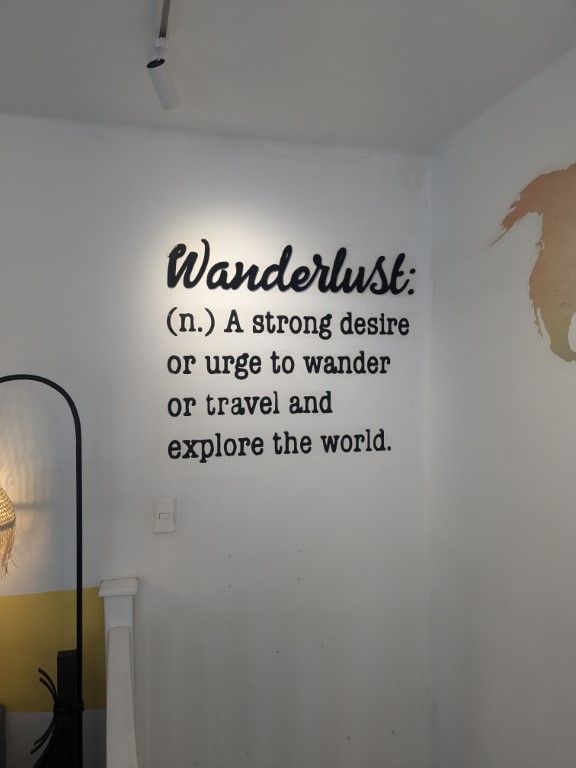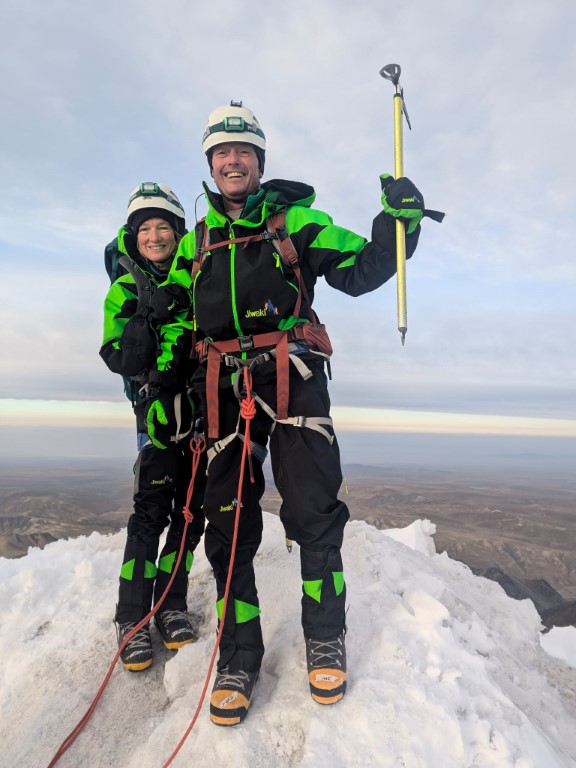
Now that we’re in Peru, maybe I should try to remember all that we’ve done in Bolivia before I forget it for good. Here’s a start….
We left Potosi right after the mine tour as we were anxious to get to La Paz. While Sucre is supposed to be UNESCO and it looked like a really beautiful city, we had one thing on our mind and it was climbing Huayna Potosi mountain before the end of the season.
Being in a country full of superstition, I too even felt superstitious that by trying to pack in too much, we might have issues with the truck and not get to do the hike. Wouldn’t you know, on the drive toward La Paz the oil pressure started fluctuating all over and running very low. The truck sounded fine but we couldn’t know if it was a problem with the engine or just the oil pressure sensor. So we stopped in a town and bought 5 liters of oil, then stopped for lunch in a grassy spot off the road and changed the oil. This would allow us to see any metal in it as well as help the viscosity if that was the problem. But it didn’t make any difference. So we continued the rest of the way to La Paz to try to find a new oil pressure sensor.
We found the outskirts of La Paz to have a lot of scenery that you just have to look out over the horizon at rather than focus on. It also sits at a high elevation and the city of El Alto even higher, but then there is a whole lower level suburb too that sits 3,000 ft below! Not realizing this, I chose a campground in that suburb so we had to drive down over a hundred speed bumps to get to it. That day seemed like forever and we were anxious about the engine but the campground did offer a refuge to the frenetic city and the scenery was interesting with hoodoo type mud formations and nice views. Visiting La Paz is difficult because there isn’t any place to stay that is right in the city center within walking distance.
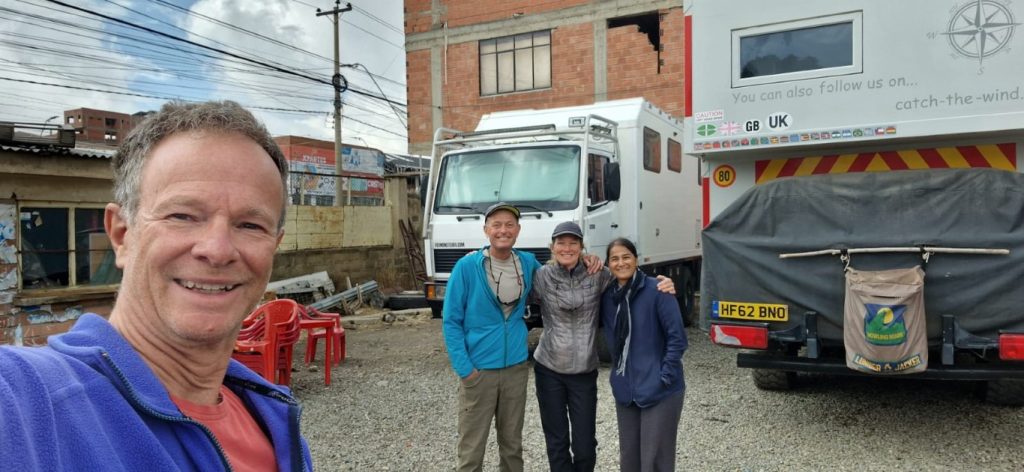
The following day, we headed back up to El Alto 3,000 ft and started searching for the sensor. I don’t know why they do this but in a lot of countries Bolivia included, stores are grouped by type. You’ll have a whole street or two with just paint, another with just barbers, another with all bread (yuck) and others with only truck parts. We went into about 15 stores looking for the sensor but no one had it until finally a guy who spoke some English made some calls and found a shop further into the city that had it. So we moved to a truckers overnight parking lot where our friends Francine & David from the UK were parked and we finally met up! They arrived from Africa to Buenos Aires last year at the same time we arrived from Panama and we’d stayed in touch all this time but had never met. They’ve given us so many tips on places to visit as they are always a little ahead of us. So we accomplished a lot from that dirty, fumy lot in that we got the new sensor and we also got to hang out with them. Thanks Dave for the picture! Jon also found new front shocks in that truck part area so at least we have 2 shocks that work! And it was funny because the two ladies that ran the parking lot were so nice and welcoming and the trucker life is a whole new window on things. Everyone was very kind to us there. It’s just ugly.
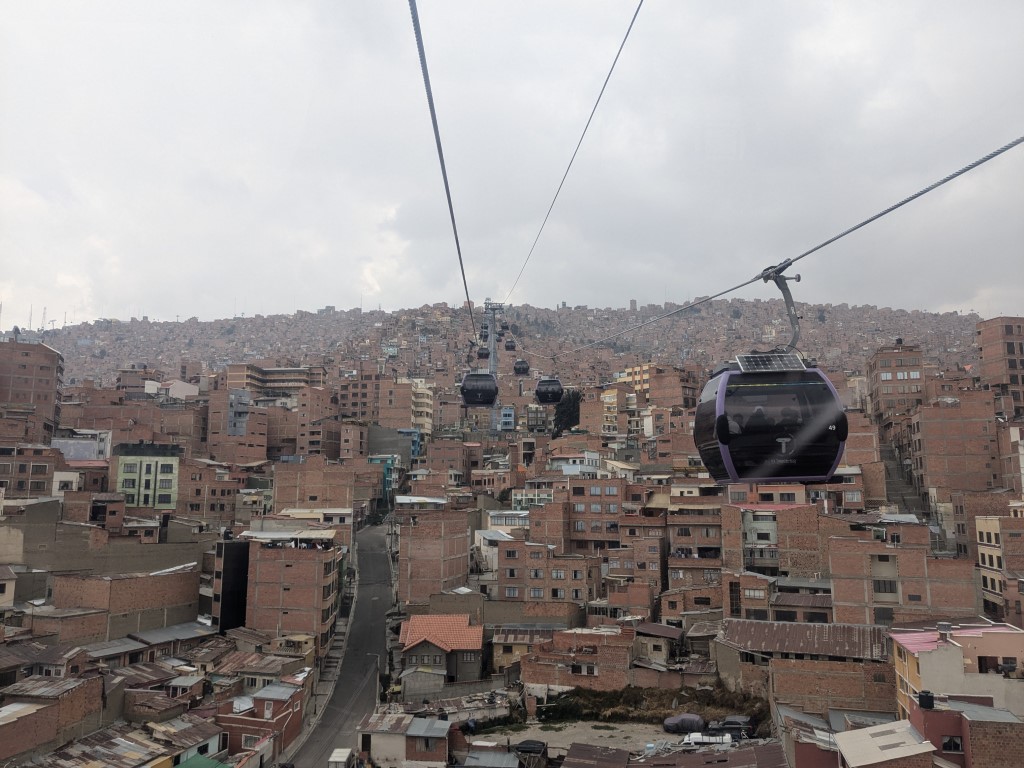
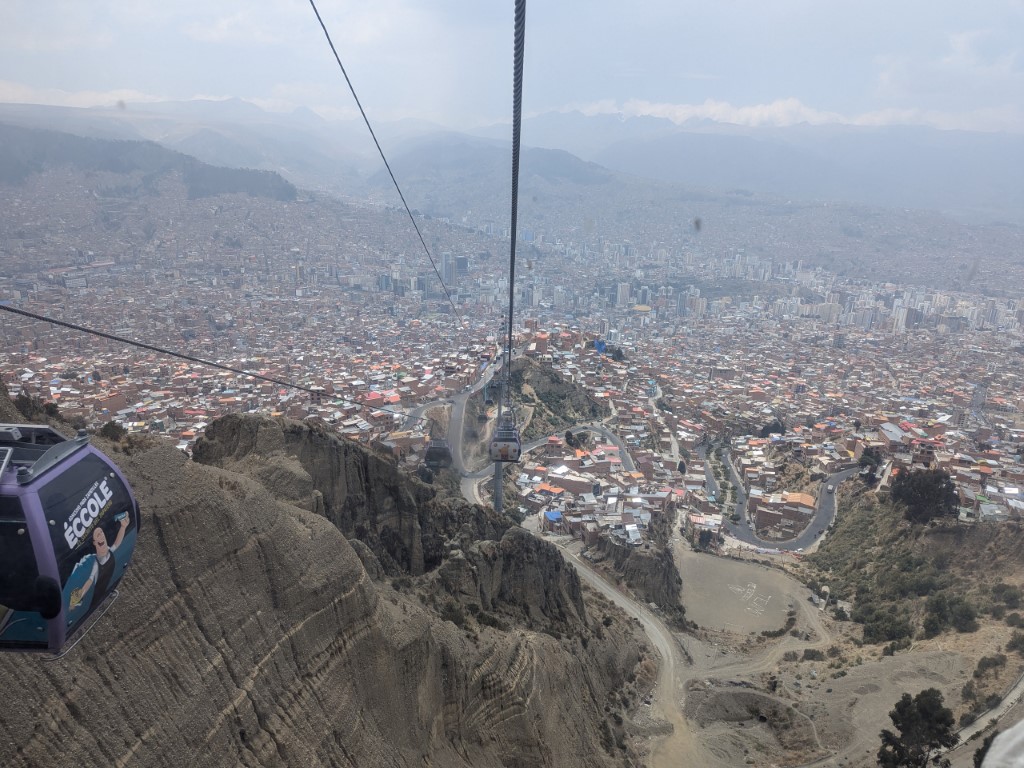
It wasn’t a long walk to get the cable car into the centro from that parking lot so we did that to see the historic center and to arrange the Huayna Potosi backpack trip. I read that former president Evo (who was voted out but wants to be President again, sound familiar?) did some things right and the cable car system was one. You can rise above all the chaos, fumes and noise of the city to ride across in peace & quiet for a few cents in what feels like a first world system. It’s pretty nice and I had visions of touring the city more using it but when it comes down to it, we really just crave the mountains. But the city center streets were cute and colorful. We saw the famous witches market with the hanging llama fetuses (more superstition), the colorfully dressed cholita women selling their fruit and flowers and the way the traffic seems to slide past with no more than an inch to spare. There’s a whole culture around the cholita women. You should look it up. It is at once colorful and interesting but also claustrophobic to me with all those petticoat layers, leg warmers, tiny little unsupportive sandals and then topped off with a bowler hat perched atop their head. Then add a huge bundle on their back that they carry which could be a baby or maybe a cow’s food for the day. Indigenous cultures have the most colorful clothes for sure. And the women do appear to do most of the work.
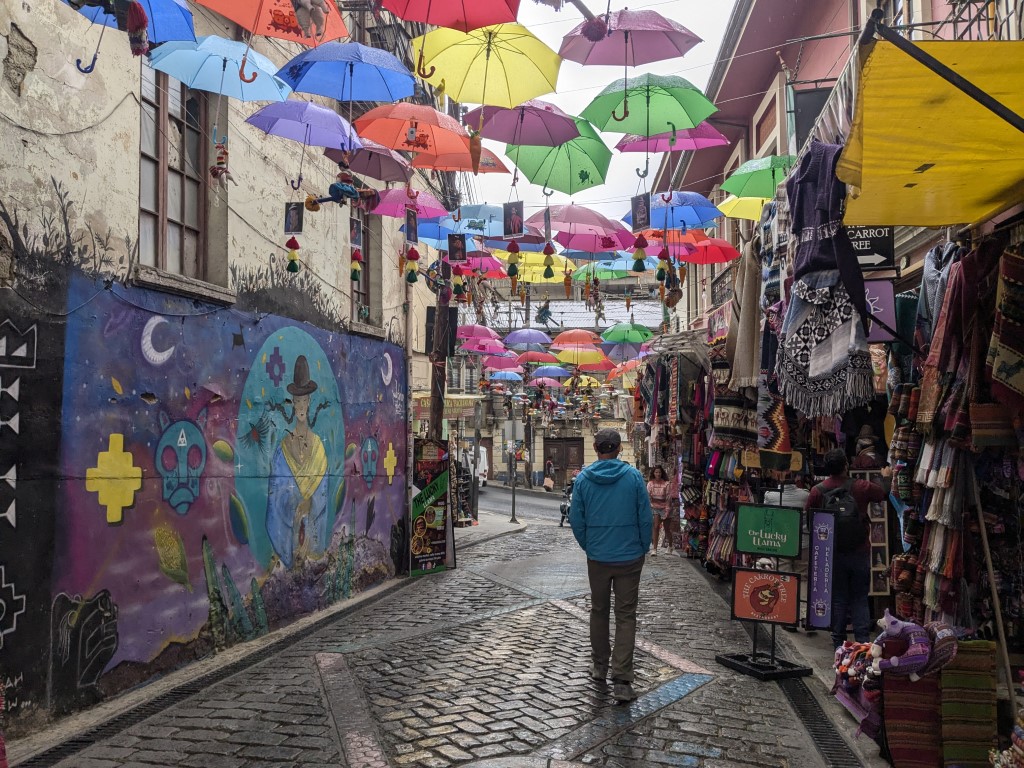
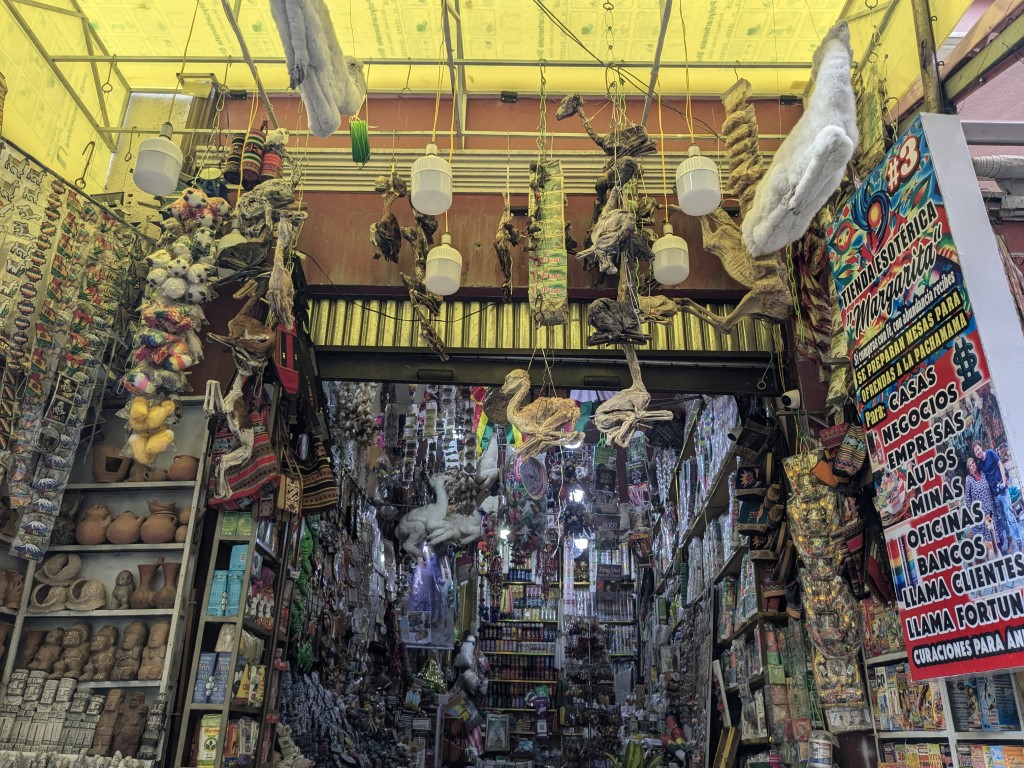
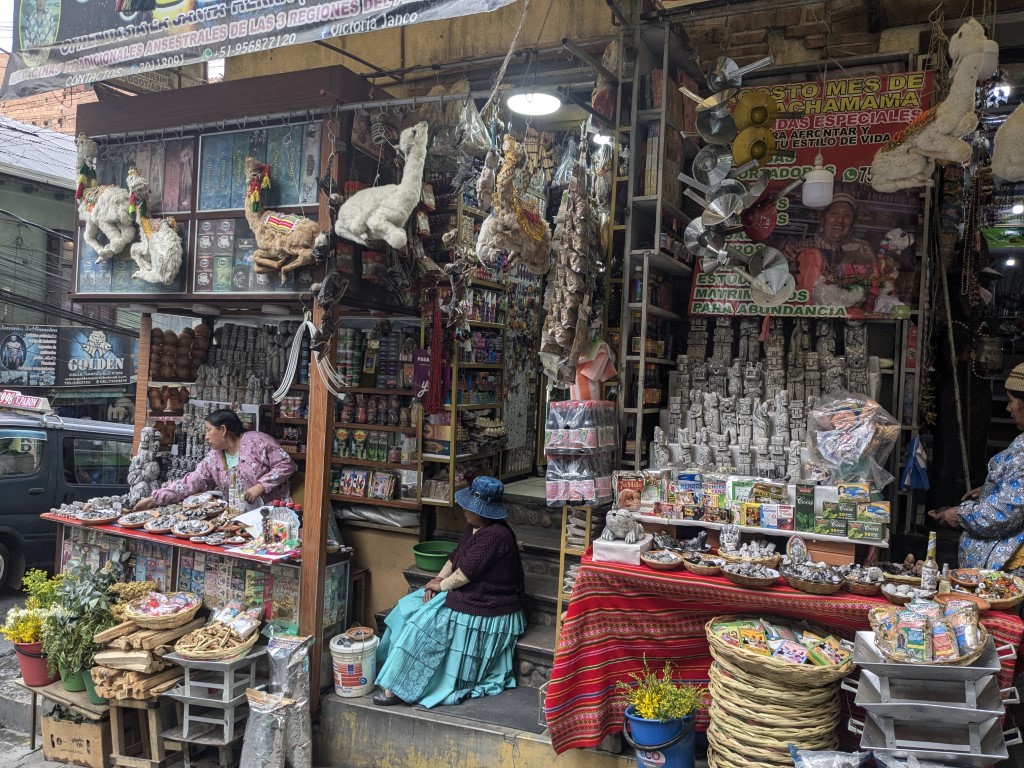
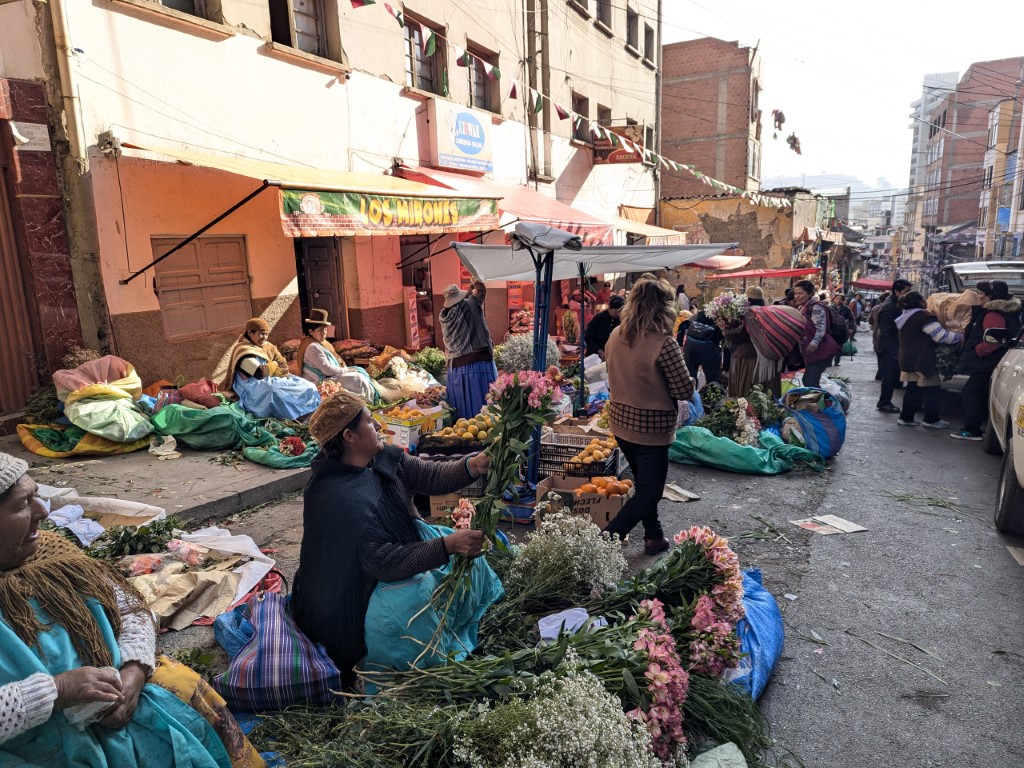
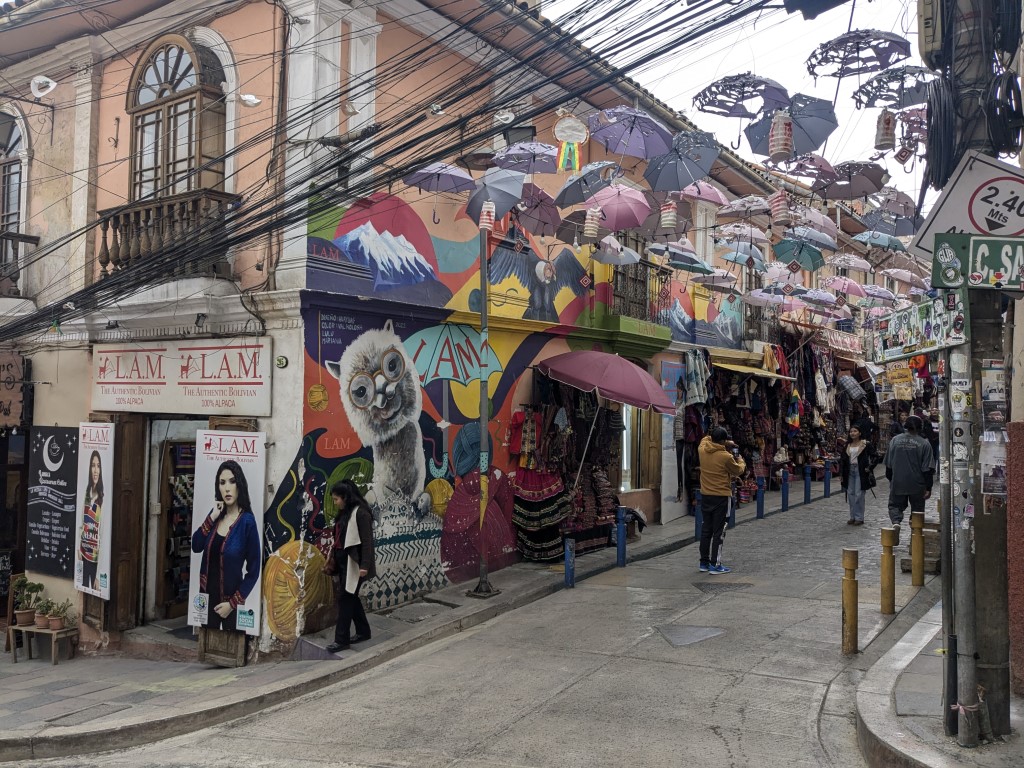
With the oil pressure sensor replaced and working, we moved back to the Colibri campground, arranged a taxi and packed our backpacks. We were off on a 3 day trip to try to climb Huayna Potosi mountain. It is known as a good beginner 20,000 ft mountain, able to be climbed with crampons and when you’re on a tour, you have a guide for every 2 people and you are tethered together for safety. We were really excited for this trip and were happy to have the support of a guide and the camaraderie of a group so that we could do it safely.
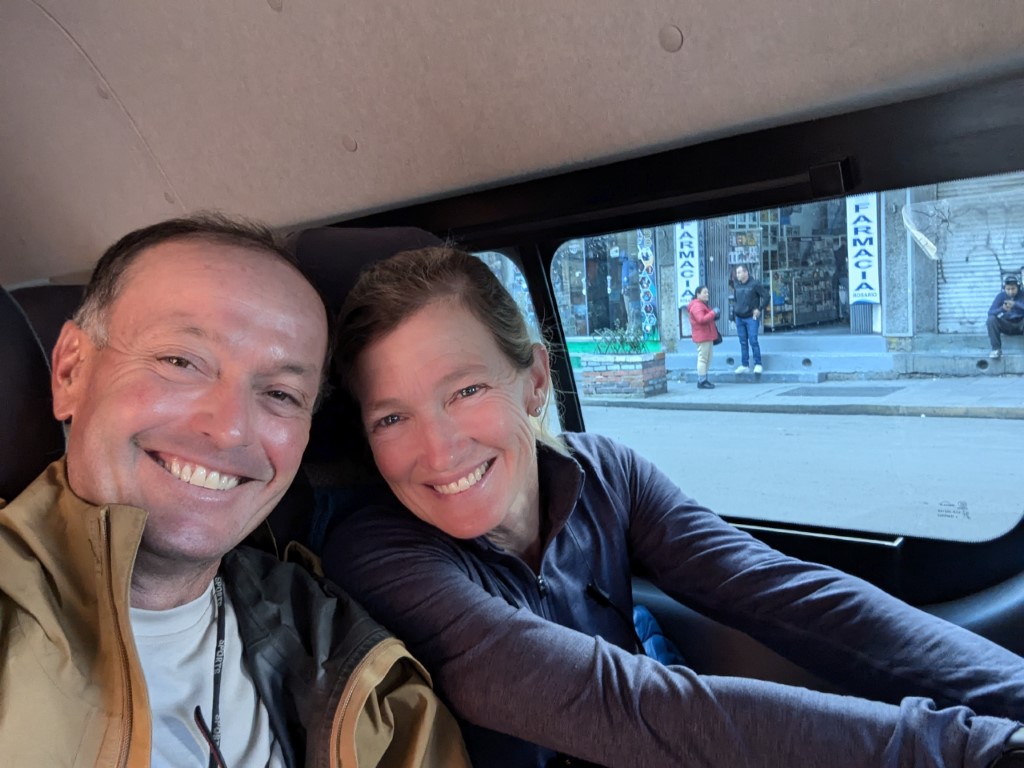
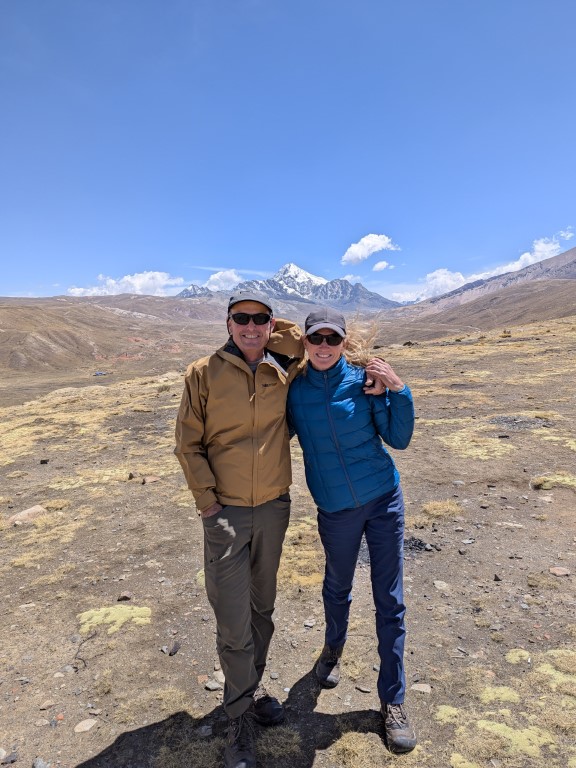
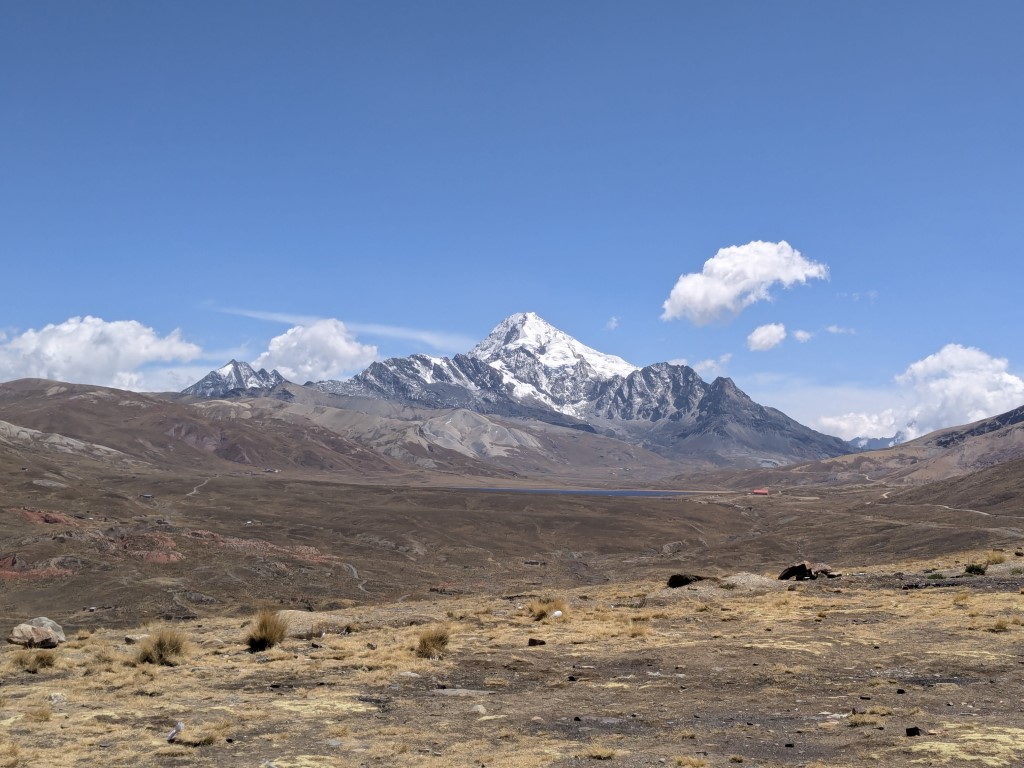
We met at the Jiwaki tour office in downtown La Paz, picked up some Diamox at the pharmacy as encouraged, met our group of about 14 hikers total and hopped in a minivan to start heading to the basecamp. Along the way, we stopped at a store to buy coca leaves and powerade, to get our mountaineering boots fitted then stopped at a viewpoint to get a good look of the mountain we’d be trying to climb. We arrived at the refugio and they had lunch waiting. It was really nice to get to know our group and we bonded right away. There were a lot of cool people who had done a lot of neat things and we were among them, just a lot older. It didn’t take long before we were singing “we’re all in this together” and laughing & joking. We were fed well on this trip, just not fancy. Then for the afternoon, we got geared up in all of the equipment that we would need for the climb and hiked up to the edge of the old glacier of Huayna Potosi to start practicing with it. They give you inner layers which we didn’t use as we had our own, a heavy outer layer both top & bottom which we learned later that they actually make in Bolivia. Crampons, heavy boots, climbing harness, helmet with light and an ice axe. We went up and down the glacier practicing and it was good to learn a few things, then nearing the end, they tethered us so we could climb up a steep edge using 2 ice axes just for fun, then rapell down. Breathless! Tired from the elevation and the activity, we hiked back to the refugio and it was time for dinner. The base camp refugio sits at 15,420 feet. Some people were already feeling it but things were OK. Jon & I had been up and down through this altitude and above for a couple of weeks already in Bolivia and felt generally pretty good. Some backpackers were already experiencing “Boli belly” GI upset but we were OK. Several people were taking Diamox which makes you have to urinate more often. Coca tea is provided and thanks to Evo Morales, drinking this and stuffing coca leaves into your cheek is now considered a part of the national culture, not a bad habit. It is a precursor to cocaine but not the drug itself. It is known to help with altitude sickness though and the guides encourage you to drink it. You can add more leaves to your tea to help even more.

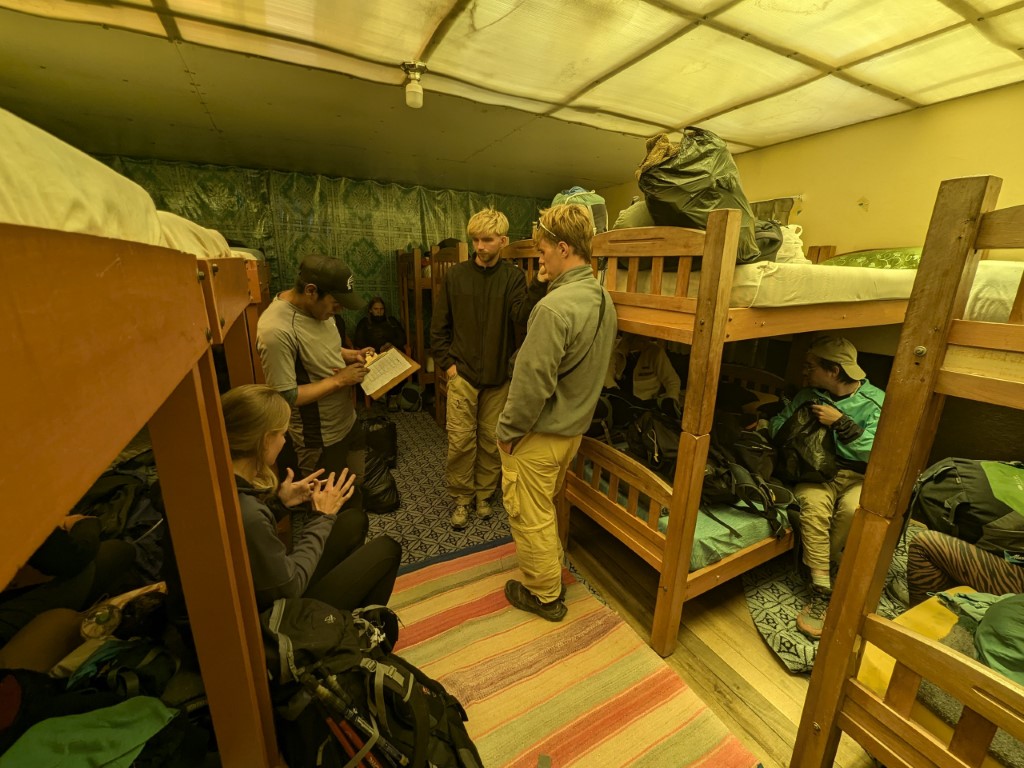
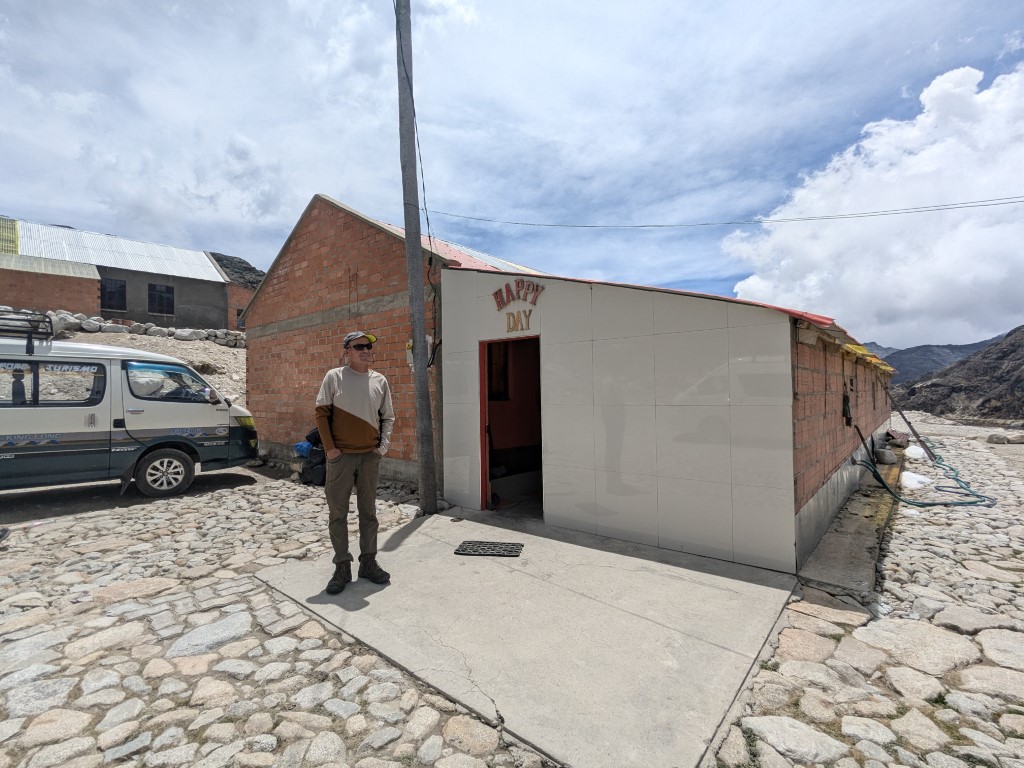
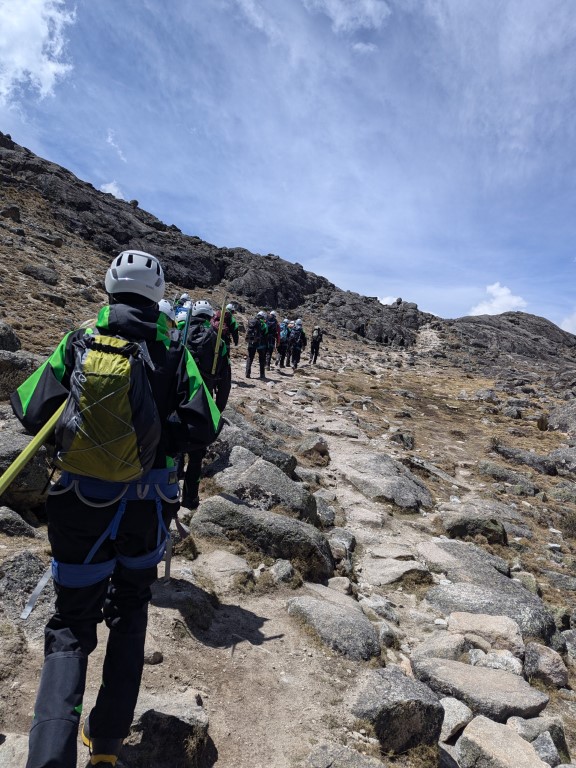
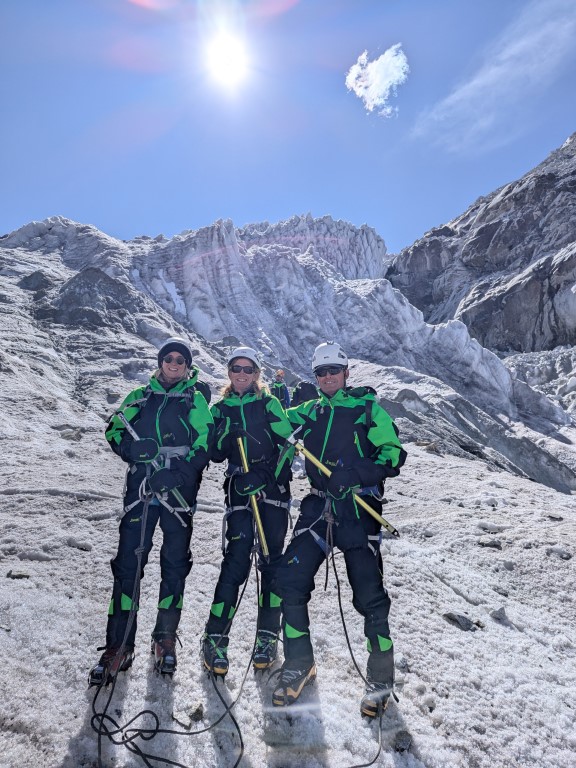
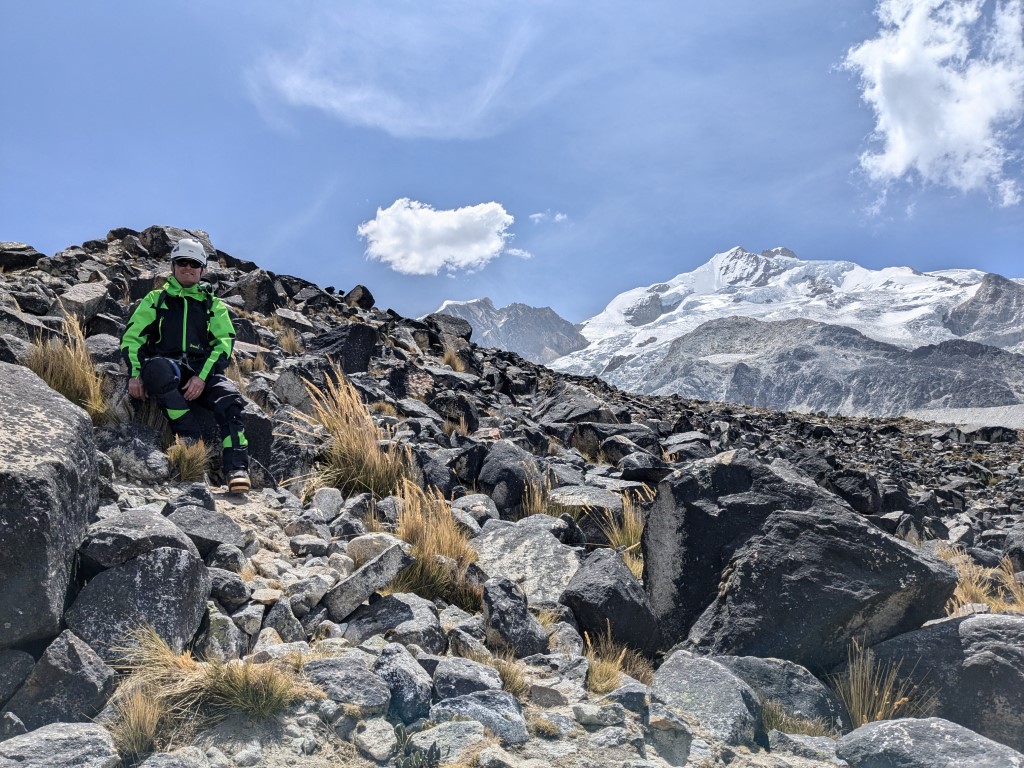
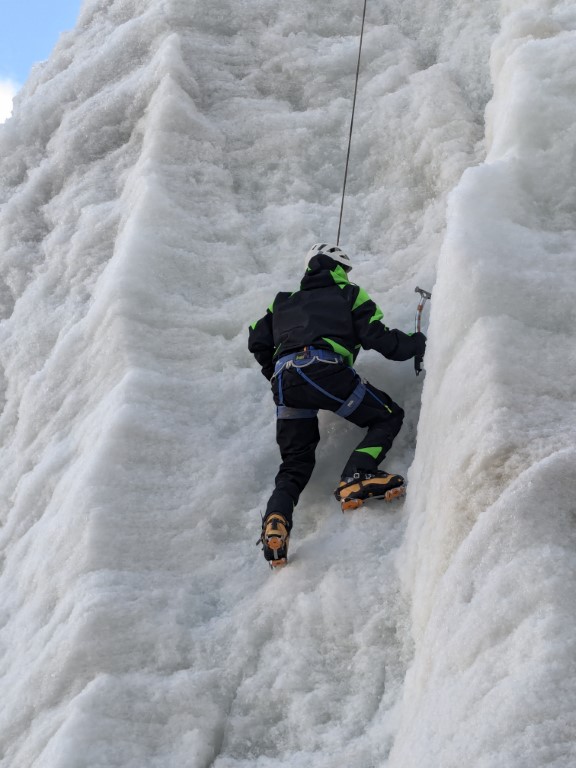
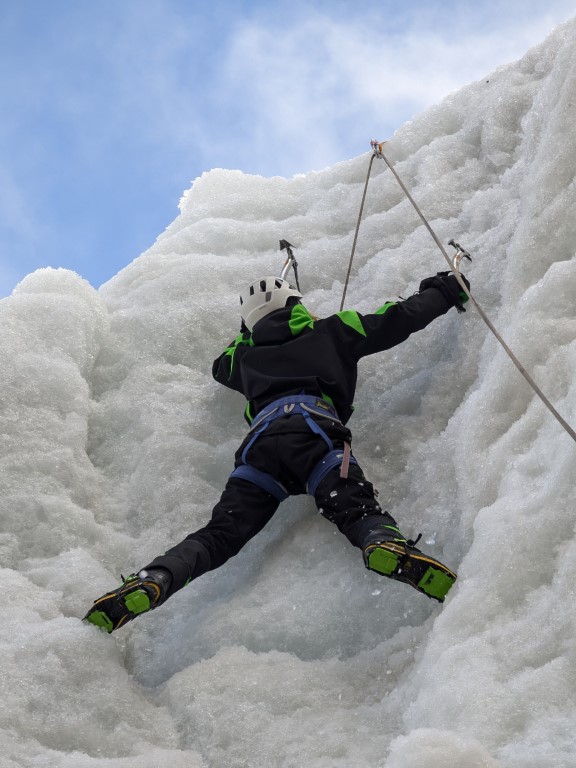
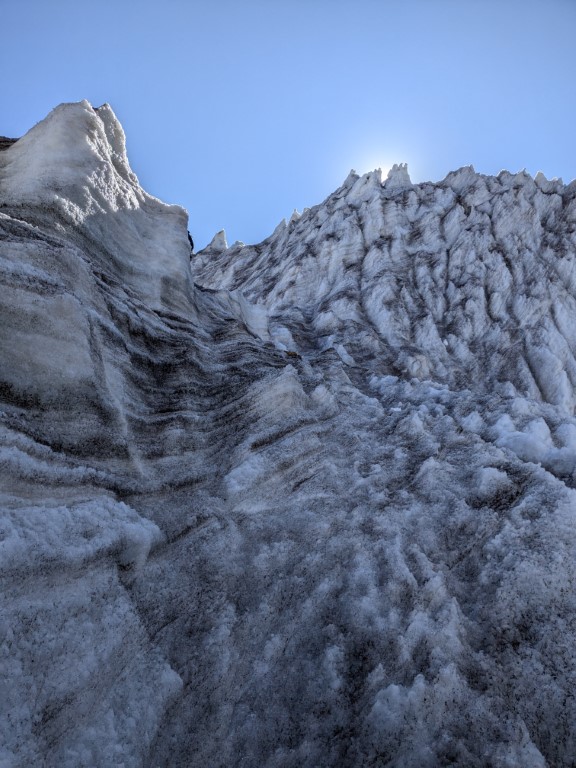
That night it was comical in the bunk room. People were getting up constantly to pee, you could hear pill wrappers popping, squirts of hand sanitizer, water bottle slurping. There was no snoring because there was no sleeping going on. I woke up with a bad headache and nausea. Since I get migraines it was just a worse version of what I usually get. Tylenol did nothing, never does but I started drinking a lot of coca tea and adding a few leaves too. Breakfast was really nice of fresh cut fruit, fresh squeezed OJ and pancakes but I couldn’t eat it. Others were pushing their food around too. Jon was feeling pretty good. I took a Diamox and kept drinking tea. The itinerary is planned that we had nothing we had to do until noon except pack our backpacks and get ready to hike to high camp in the afternoon after lunch. This gives you extra time to acclimate. High camp sits at 17,060 ft. Thankfully, the Diamox kicked in I guess because I felt better a couple of hours later and ate lunch. We had to pack all the gear up in our packs because we didn’t need it on to hike up the trail to high camp. Yippee!
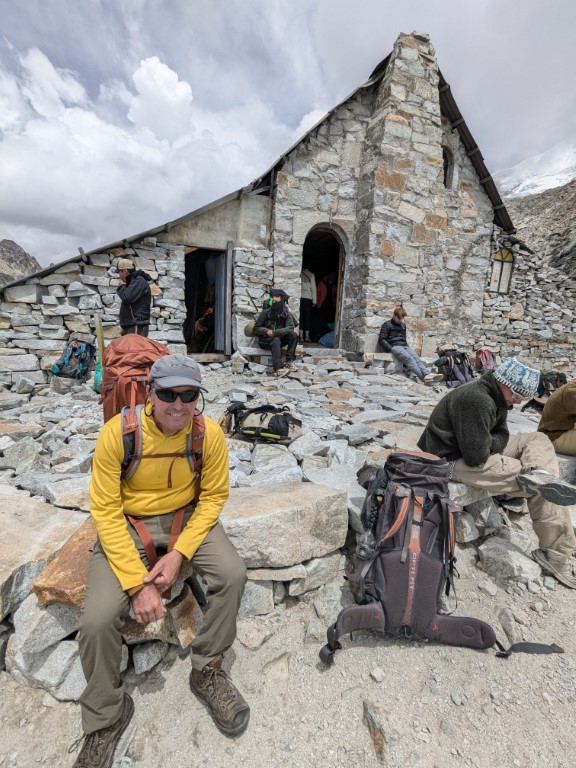
High camp was an attractive gray stone building in pretty scenery. The bathrooms were outside the hut this time and it was pretty cold once the sun got low. In both of these huts, the cooking and our bodies make the heat. After packing our bags for the items we would need for the climb that night, we all layed around in our beds relaxing and talking and then moved down to the table for an early dinner. We would be getting up at 11:30pm for a quick breakfast, gear up and then out the door by 12:30 to start the climb.
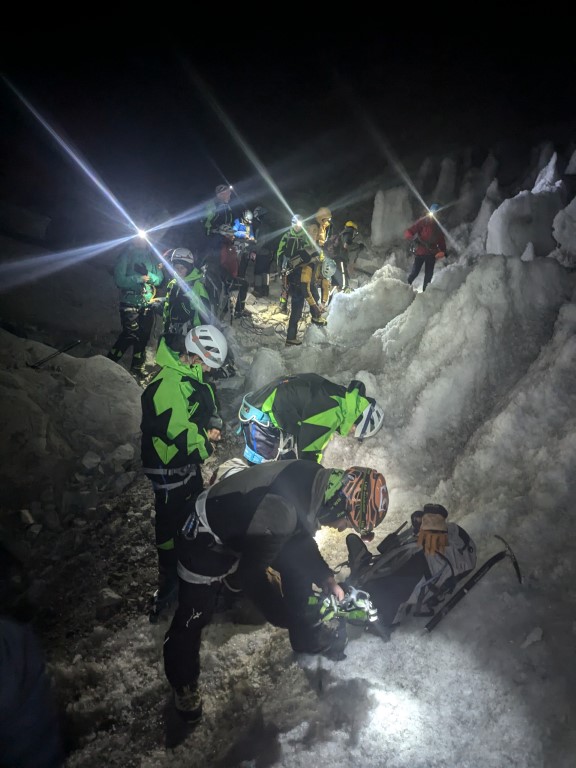
By 6:30 or so, we were all trying to sleep. The bathrooms being outside meant everyone was trying to hold their urine and it was actually dead quiet. Exhaustion helped and Jon & I both got some real shut-eye and woke up feeling pretty good. Breakfast was bread with jam. Then before we all knew it, we were out in the darkness with our headlights. In about 20 minutes of hiking, we were up to the edge of the glacier of Huayna Potosi ready to put the crampons on and tether up to our guide. Then started 6 hours of climbing through a white world toward the summit. Huayna is a beautiful mountain. It has an incredible ice edge drop off that I’ve never seen before. We’d never walked on a glacier for that long, straight up, in the night. Side glances off our headlights would light up huge icicles, little ice caves, and glittering ice. It was steep and we had to jump over crevasses that we just couldn’t believe. There were moulins off to the side that scared me because it wasn’t that easy walking on the “trail”. The ice axe was a good crutch for stability. I have very tight achilles tendons genetically and I can’t put my feet flat when climbing. This makes walking in heavy plastic boots with crampons on harder to do. On top of that, I made massive blisters that are nowhere near healed yet. Whenever I slipped, our guide Ivan was right there to tighten the tether. There was only one person in our group that fell off the side of the trail and had to be lifted back up. Jon felt pretty good. He didn’t get nauseous and while he was really out of breath the first day, it got better after that as long as our pace wasn’t too fast.
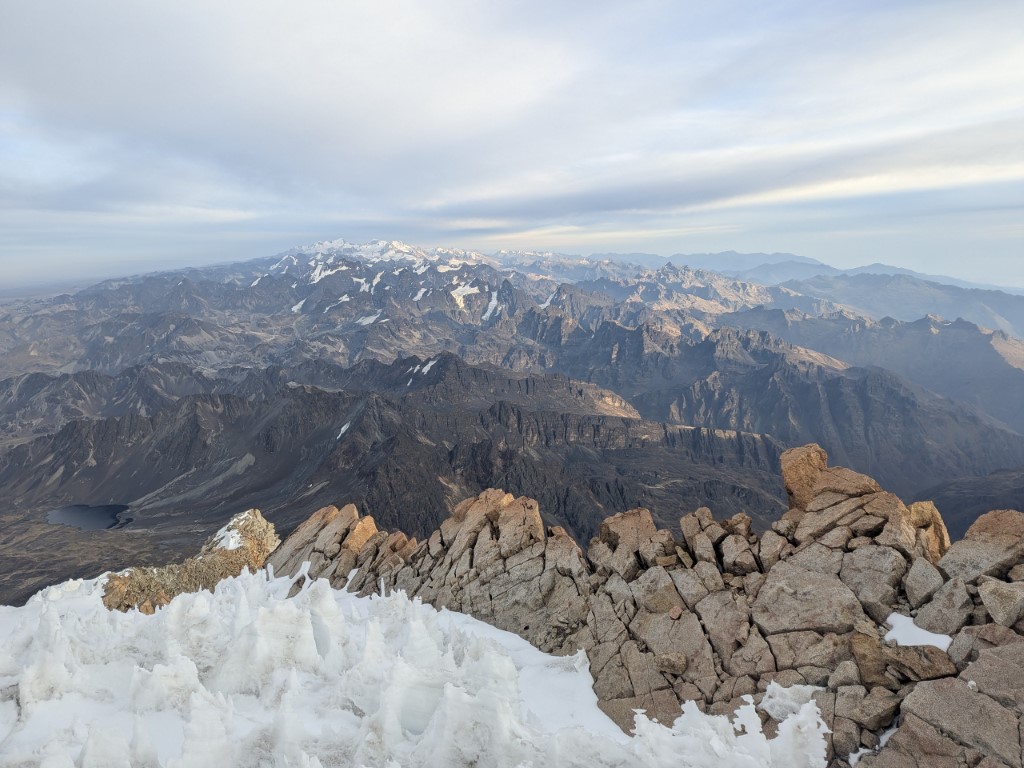
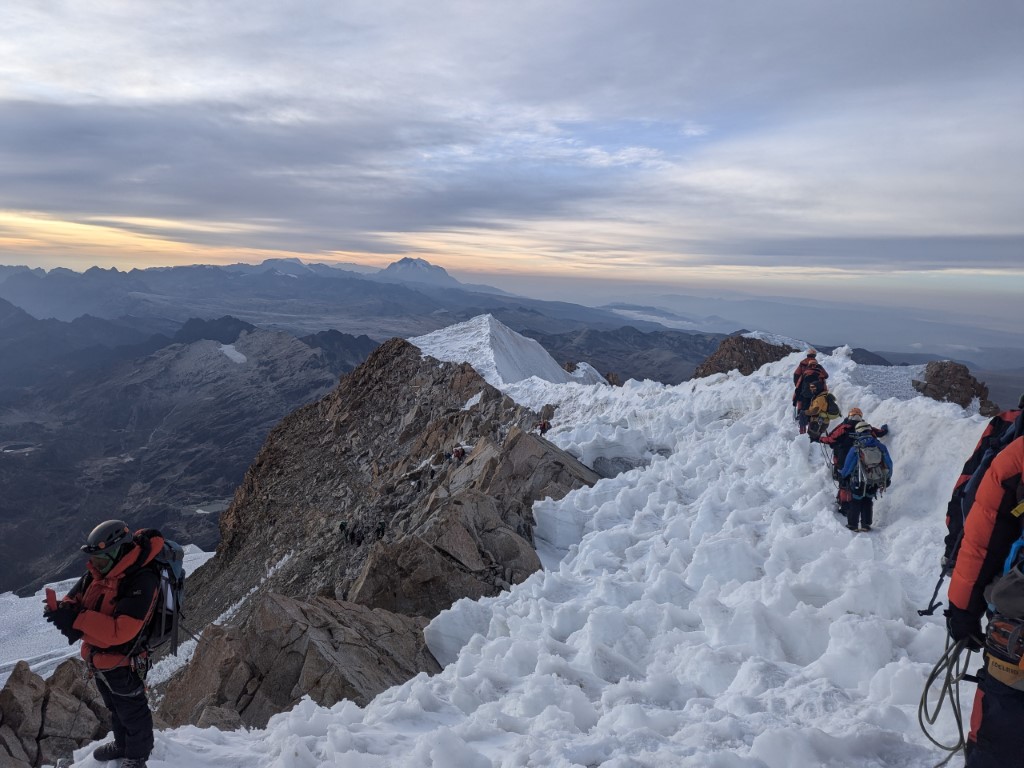
It felt good to see the sky start to brighten up as if we were on watch at sea but we were also nose down to the climb, the effort becoming harder as we got higher. We would take breaks to catch our breath which made a big difference but then we needed to keep pushing upward to get to the summit in time. I was starving but the cliff bars were frozen along with the Snickers bars and our water bottles were slush. Nearing the summit, we took the crampons off to climb over some cliffy rocks and then there was a smooth enough snow path to the tippy top where we could finally stop climbing! I felt a bit emotional up there as others did and it was a wonderful feeling to have made it. There was a great vibe but you could also sense everyone’s exhaustion. The views were all the way to Lake Titicaca, over the glacier of Huayna Potosi and across the rest of the mountains in the range. Very beautiful. We couldn’t stay up there for long because the guides were telling us that we’d get cold fast and that the sun would warm the ice and make conditions dangerous. Plus we had a very long way left to go but at least it was down.
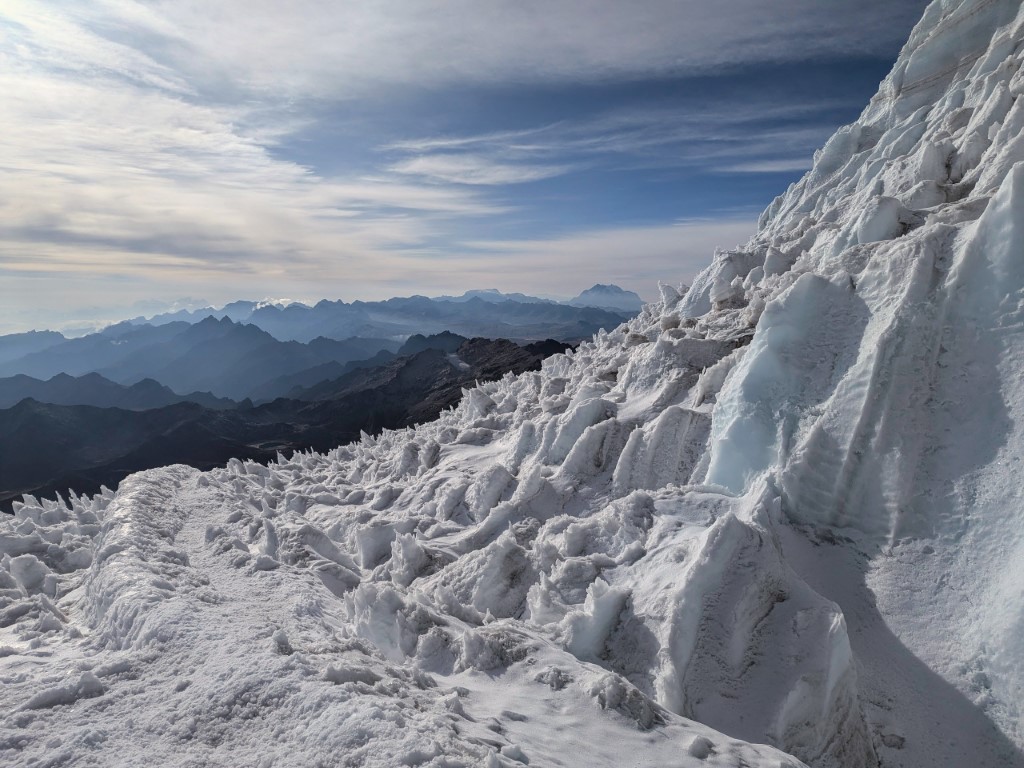
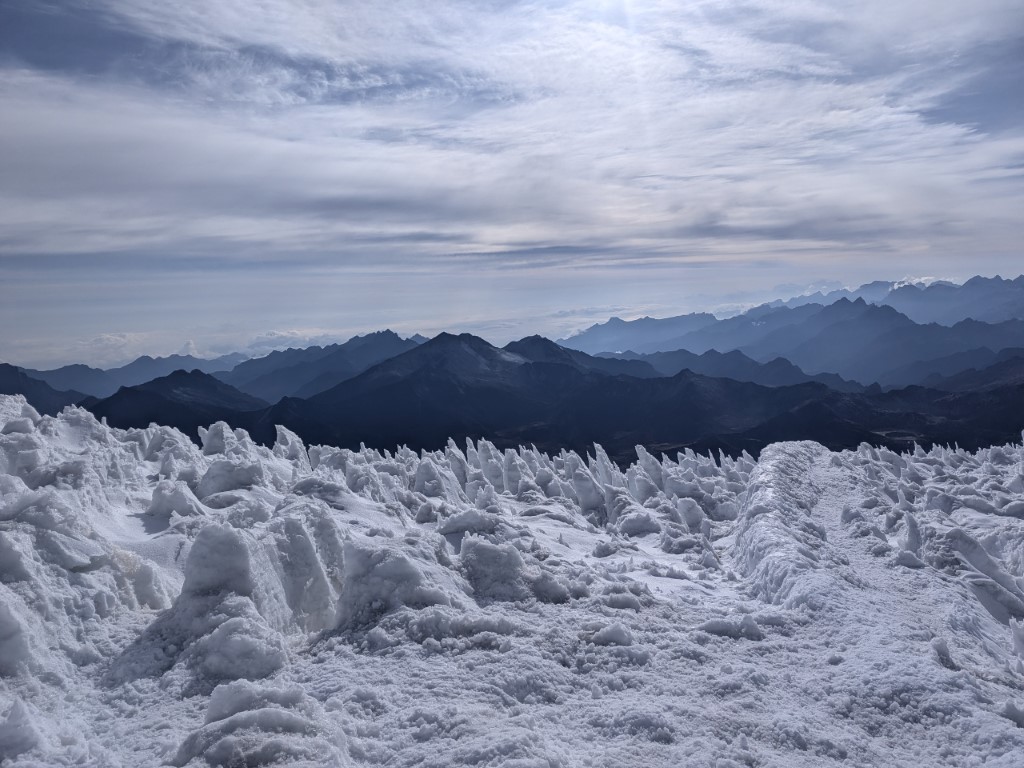
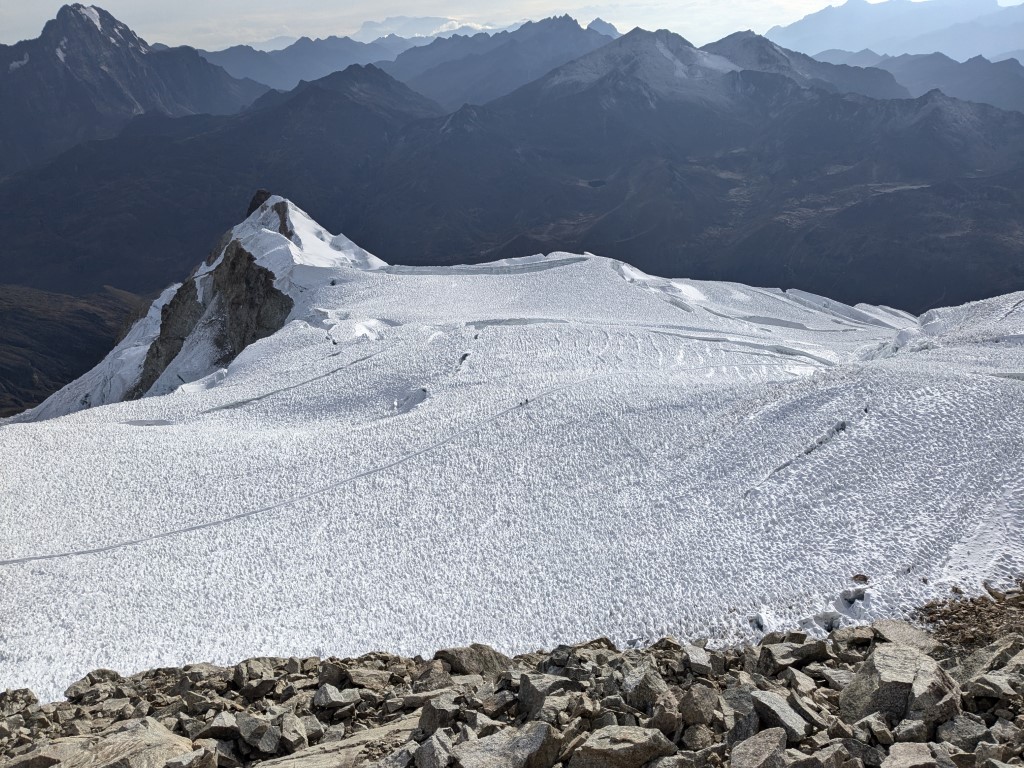
Seeing the mountain now in the light was beautiful. I loved all of the snow features. But with the ice axe in hand and having to keep moving it was hard to take pictures. Hopping over the crevasses with tired legs in daylight was unnerving and as we were now going downhill, our guide was in the back and Jon was leading. That way, our guide could tighten the rope if we started falling downhill. We did notice streams of melting snow on the trail and could see a little about what our guide meant about it being more stable in the night but I was starving and wished for more time to take in the view.
We made it back to High Camp with spent legs where we all crawled into our beds for a few minutes talking about what we’d just done. We were told not to sleep as we needed to have some soup for a light early lunch and then pack up to head back to base camp. It felt so good to be off our feet and out of the gear. And we’d made it! What a great feeling.
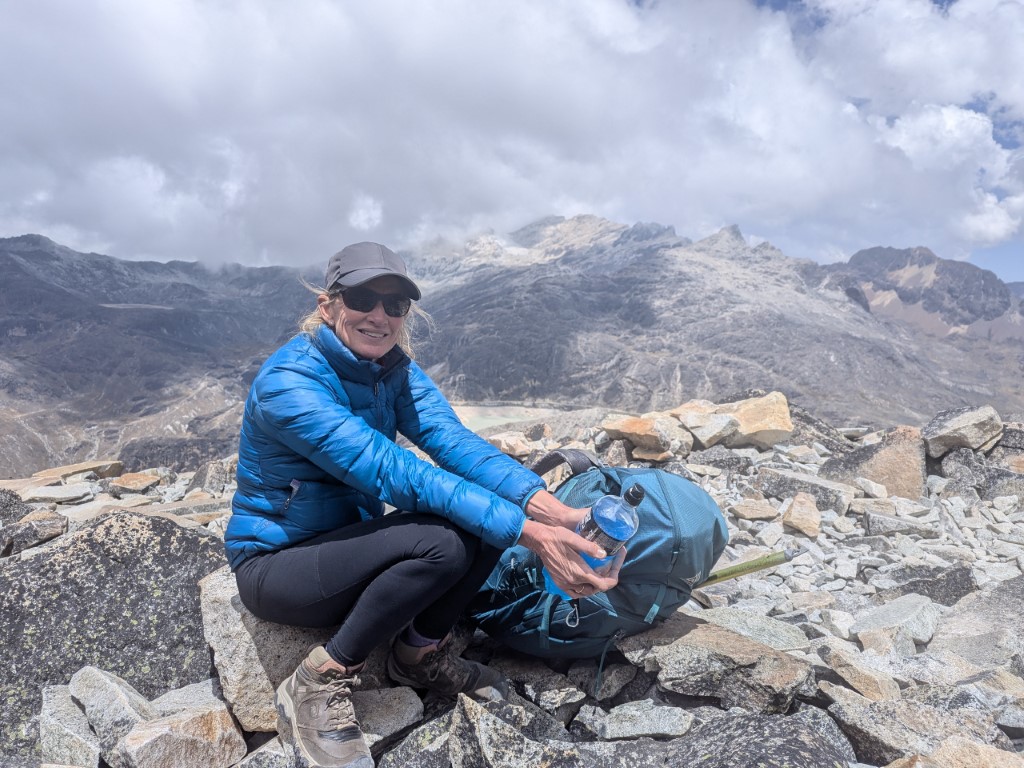
Altthough there was a lot of dread to hiking all the way back to base camp, it actually wasn’t too bad. It was a sunny day and we were running on adrenaline still. We returned all the gear to our guides said our goodbyes and thank you’s, hopped back into the minibuses and they took us back to La Paz. Once there, we joined some of our new friends Steve & Caroline at a restaurant for a burger and a chocolate shake. Through them and others, we’d learned about the 5 day Salkantay backpack to Machu Picchu and got some tips on how to do it. Then a cab back to our truck before we collapsed. I already had leftovers in the fridge ready to heat up and after a good shower, we hit the sack for a 12.5 hour solid sleep without waking up for anything!
We really loved climbing this mountain, meeting cool people, learning from great guides and having it all turn out so good. We pushed our limits and experienced something new which means a lot to us. After a day of rest, we were back at it biking down the Death Road, but I’ll stop here for now.
